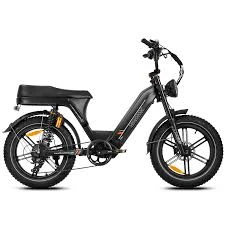
- Afrikaans
- Albanian
- Amharic
- Arabic
- Armenian
- Azerbaijani
- Basque
- Belarusian
- Bengali
- Bosnian
- Bulgarian
- Catalan
- Cebuano
- Corsican
- Croatian
- Czech
- Danish
- Dutch
- English
- Esperanto
- Estonian
- Finnish
- French
- Frisian
- Galician
- Georgian
- German
- Greek
- Gujarati
- Haitian Creole
- hausa
- hawaiian
- Hebrew
- Hindi
- Miao
- Hungarian
- Icelandic
- igbo
- Indonesian
- irish
- Italian
- Japanese
- Javanese
- Kannada
- kazakh
- Khmer
- Rwandese
- Korean
- Kurdish
- Kyrgyz
- Lao
- Latin
- Latvian
- Lithuanian
- Luxembourgish
- Macedonian
- Malgashi
- Malay
- Malayalam
- Maltese
- Maori
- Marathi
- Mongolian
- Myanmar
- Nepali
- Norwegian
- Norwegian
- Occitan
- Pashto
- Persian
- Polish
- Portuguese
- Punjabi
- Romanian
- Russian
- Samoan
- Scottish Gaelic
- Serbian
- Sesotho
- Shona
- Sindhi
- Sinhala
- Slovak
- Slovenian
- Somali
- Spanish
- Sundanese
- Swahili
- Swedish
- Tagalog
- Tajik
- Tamil
- Tatar
- Telugu
- Thai
- Turkish
- Turkmen
- Ukrainian
- Urdu
- Uighur
- Uzbek
- Vietnamese
- Welsh
- Bantu
- Yiddish
- Yoruba
- Zulu
Feb . 15, 2025 14:28 Back to list
26 in mountain bike
For those venturing into the thrilling realm of mountain biking, understanding the meaning behind mountain bikes and their design is crucial. Mountain bikes are engineered for off-road cycling adventures, embodying a blend of technical sophistication and durable engineering tailored to rugged terrains.
Beyond physical specifications, understanding mountain bikes also means recognizing the different types tailored to specific biking styles. Cross-country bikes are built for speed and efficiency over long distances, typically on less technically demanding trails. Trail bikes strike a balance with moderate suspension travel, making them versatile for various terrains. Enduro and downhill bikes are engineered for steeper, more technically challenging trails, offering increased suspension travel and more substantial frames to withstand the rigors of aggressive riding. The latest advancements in technology further refine what it means to own a mountain bike. Electronic shifting and integrated data systems provide real-time insights into performance metrics, elevating the riding experience by enabling precision and personalization. Ultimately, the meaning of mountain bikes extends beyond their physical components. They represent a fusion of freedom, adventure, and the pursuit of adrenaline-fueled exploration. Each adjustment and component is a testament to the relentless pursuit of performance and safety, shaped by decades of evolution in biking technology and a deep understanding of human-nature interaction. For those who immerse themselves in the world of mountain biking, this knowledge becomes second nature, a testament to the symbiotic relationship between rider, machine, and terrain. Investing in the right mountain bike is not just about owning a piece of equipment; it is about buying into a lifestyle where adventures are limitless, and the journey is just as thrilling as the destination.


Beyond physical specifications, understanding mountain bikes also means recognizing the different types tailored to specific biking styles. Cross-country bikes are built for speed and efficiency over long distances, typically on less technically demanding trails. Trail bikes strike a balance with moderate suspension travel, making them versatile for various terrains. Enduro and downhill bikes are engineered for steeper, more technically challenging trails, offering increased suspension travel and more substantial frames to withstand the rigors of aggressive riding. The latest advancements in technology further refine what it means to own a mountain bike. Electronic shifting and integrated data systems provide real-time insights into performance metrics, elevating the riding experience by enabling precision and personalization. Ultimately, the meaning of mountain bikes extends beyond their physical components. They represent a fusion of freedom, adventure, and the pursuit of adrenaline-fueled exploration. Each adjustment and component is a testament to the relentless pursuit of performance and safety, shaped by decades of evolution in biking technology and a deep understanding of human-nature interaction. For those who immerse themselves in the world of mountain biking, this knowledge becomes second nature, a testament to the symbiotic relationship between rider, machine, and terrain. Investing in the right mountain bike is not just about owning a piece of equipment; it is about buying into a lifestyle where adventures are limitless, and the journey is just as thrilling as the destination.
Next:
Latest news
-
The Ultimate Kids' Four-Wheeler Experience
NewsJul.09,2025
-
The Ultimate Guide to Mountain Bikes: Gear Up for Your Ride
NewsJul.09,2025
-
The New Age of Cycling: Electric Bikes for Every Rider
NewsJul.09,2025
-
The Best Kids Bicycles: Ride in Style and Safety
NewsJul.09,2025
-
The Best 3-Wheel Scooters for Kids: Fun, Safety, and Adventure
NewsJul.09,2025
-
Revolutionize Your Ride: Affordable Electric Bikes
NewsJul.09,2025
-
Finding the Perfect Mountain Bike for Every Rider
NewsJul.09,2025



